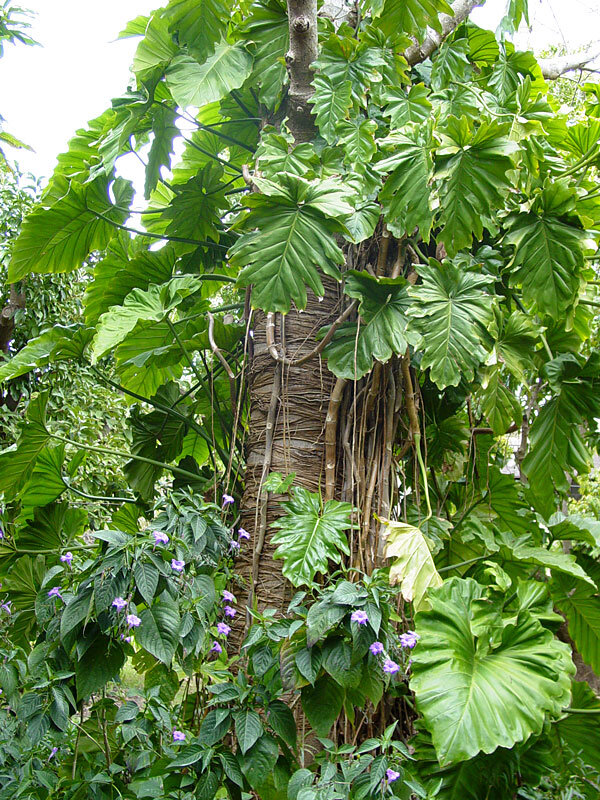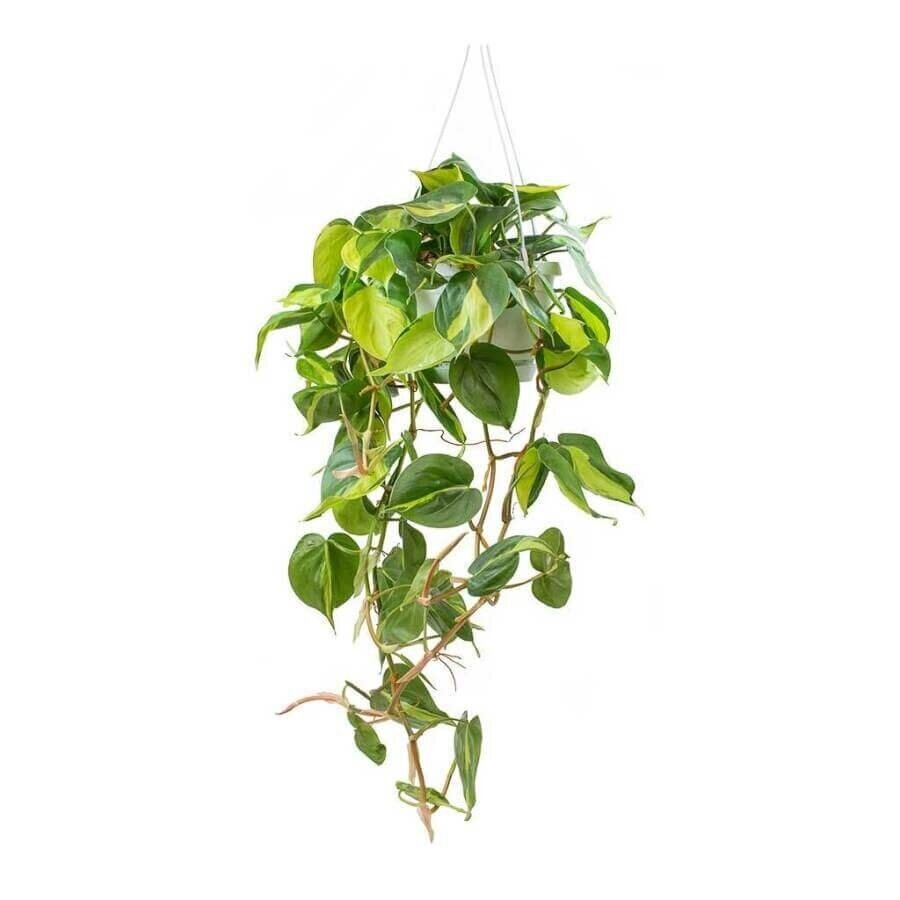Your New Best Friend Phil(odendron)
Did we just become best friends??
I’m gonna say it right here: if you’re not already friends, you need to meet Phil(odendron), cause he’s the coolest. Philodendrons are like those new friends who you click with right away - instant soul connection, tons of laughs, and immediate plans together for the next 3 weekends. You feel giddy with excitement, like a whole new world is opening up to you. And with Philodendron, it is!!!
Philodendrons are wonderful houseplants because they’re relatively easygoing. They love the same kinds of conditions which naturally occur in our homes, they’re pretty forgiving of human error, and they come in a wide array of shapes, sizes, colors, and habits, so it’s no problem to find one that’s just right for you.
Where Phil’s Coming From
Philodendrons were first collected and classified by Europeans in the 1600’s in Central America, and there are just under 500 species discovered to date! Some live in the crooks of jungle trees, with long aerial roots reaching down to the soil. Others start life close to the ground among tree roots, and grow up the trunk.
In these jungle conditions, Philodendrons usually bask in bright, dappled light. In an indoor setting, this means that they will flourish close to a bright window, but can’t tolerate sun rays directly hitting their leaves. Use a sheer curtain or keep Phil back from the window 3 - 6 feet. Don’t have a super bright window? No problem! They’re also tolerant of lower light situations - think about that jungle setting, where there may sometimes be heavier leaf cover. You can put Phil right in a north-facing window, or 1 - 3 feet from an east-facing one.
Phil’s also tolerant of varying humidity levels - even though the jungle can be a humid place, he exists in the upper branches of the trees for the most part, so he’s tolerant of a wide range of humidity levels. You can be pretty relaxed about watering him as well. Give him a good, thorough soak and then don’t soak again until the soil surface is dry.
THE BOTTOM LINE:
Phil is SUPER chill. If you give him optimum conditions, he’ll give you everything he’s got and be full, lush and huge. If you don’t, he’ll still be one of the coolest and best plant friends you’ve ever had.
LIGHT: Bright, filtered light, tolerant of some shade or darker rooms
WATER: Soak the soil, drain off excess water, and don’t repeat until the soil surface is dry to the touch.
AIR: Humid is best, but not critical
SOIL: Fertile, well-drained. Fertilize monthly (approx. every other watering) with Fox Farm Grow Big.
SO MUCH ROOM FOR ACTIVITIES:
Hanging out with Phil
Phil’s an active guy. He’s always up for something fun. For you, that means he’s a great plant to practice your indoor gardening skills on.
TRAINING
Phil’s really into training…no, not in the gym! Many Philodendron varieties can be trained up poles, just as they climb trees in the wild! Check that the variety you choose is this type of Philodendron if you want to experiment with this!
You can buy ready-made poles for this, or make your own! Gently attach Phil’s branches to the pole using floral tape, garden velcro, or rubber garden wire - just make sure the tie isn’t too tight or you’ll damage or even break the stem!
Mist the pole regularly and Phil will grow roots right into the moss!
PROPAGATION
One of the reasons Philodendrons are so popular (aside from their beauty and easy-going nature), is that they’re relatively easy to propagate from cuttings.
Snip a leaf just below a growth node (often a tiny bump on the stem, or just below a spot where two leaves have branched apart)
Put the cutting in water
Wait for roots to grow!
You won’t always have success with this propagation technique, but if you’re going to play around with it, Philodendrons are one of the most reliable to experiment with.
Just go slowly! Phil, like any friend, cannot handle being chopped in half or having all of his limbs cut off at once.
ENJOYING THE OUTDOORS
While hiking isn’t one of Phil’s favorite activities, if you live in a tropical climate (zone 10 or higher), Phil can become an outdoor plant. He’ll thrive in your garden, and so is a commonly used and well-loved landscape plant.
If you aren’t lucky enough to live in the tropics, Phil would love to hang out with you on the porch or patio in the summertime. When the weather is consistently warm, he’ll thrive as a container plant, and will gladly turn your outdoor space into a tropical paradise. When temps start to drop in fall, just wheel or carry him back inside for the winter!
Lookin’ Good Phil!
There are a LOT of different kinds of Philodendrons out there. I’ve gathered images of only 12 of the more popular or exotic types being sold as houseplants now, and you can already see the amazing variety available. To make matters BETTER, they are constantly hybridizing (breeding) new ones, with ever more intricate leaf patterns, cooler color combos, and varying sizes.
Philodendron ‘Birkin’
Image: Door 2 Door Plants
Philodendron ‘Micans’
Image: RareHousePlants
Philodendron ‘Lemon Lime’
Image: Pretty in Green
Philodendron ‘Silver Sword’
Image: PlantsbyJohn
Philodendron ‘Xanadu’
Image: Plant Shop Seattle
Philodendron ‘Selloum’
Image: Greenery Unlimited
Philodendron ‘Jungle Boogie’
Image: Spruce
Philodrndron tripartitum
Image: Ken’s Philodendrons
Philodendron ‘Brasil’
Image: Planting Man
Philodendron ‘Pink Princess’
Image: BOT Garden
Philodendron ‘Florida Ghost’
Image: Plant Circle
Philodendron ‘Prince of Orange’
Philodendron Cheat Sheet
Phil’s Favorite Things:
Warm, humid air
Bright, indirect sunlight
Fertile soil
A good soak, then let soil surface become dry before watering again.
Skill level: Beginner to Intermediate (some exotic varieties can be difficult to keep alive)
Cost: $$$$$
Attention: Chill
Risk to Reward Ratio: Low/High
Repot: Once a year
Here’s to an amazing new friendship, Phil!
Did you like this post? Got ideas for the next one? Questions? Please let us know in the comments or say hi on Instagram!
If you want all the fun and none of the work, learn more about our plant care plans, design services, and other offerings here!
To stay up to date on our articles, subscribe:


















